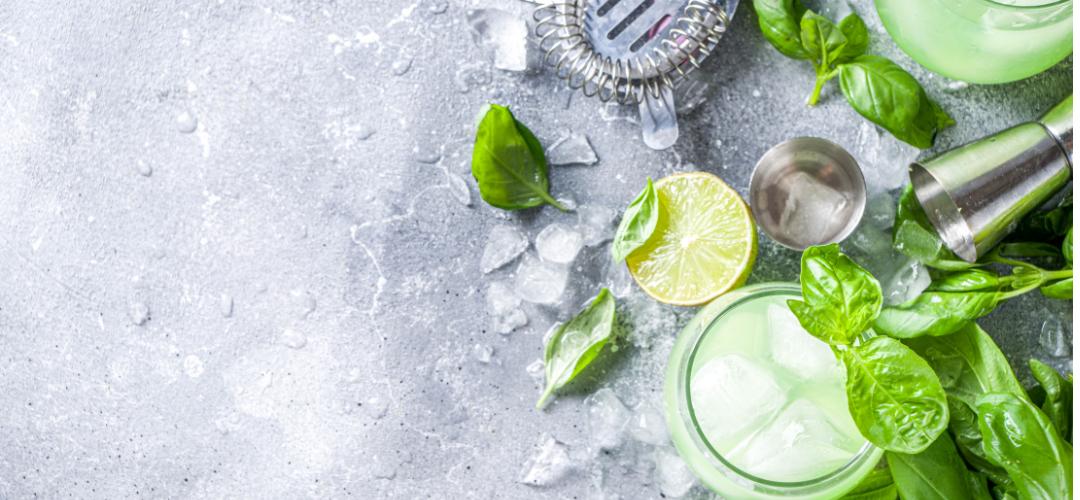The thought of using fresh herbs for cocktails brings me so much excitement and joy. Herbs can add a touch of nature—elevating the flavor and adding instant elegance to the look of any cocktail. And ohhh, those herby aromas! They ignite your senses and enhance the whole drinking experience.
In this post, I explain a few key things to know when using herbs for cocktails, five perfect herbs to try out, and easy cocktail recipes you’re going to love.
How to Use Herbs for Cocktails: Releasing Oils, Garnishing, and Infusing
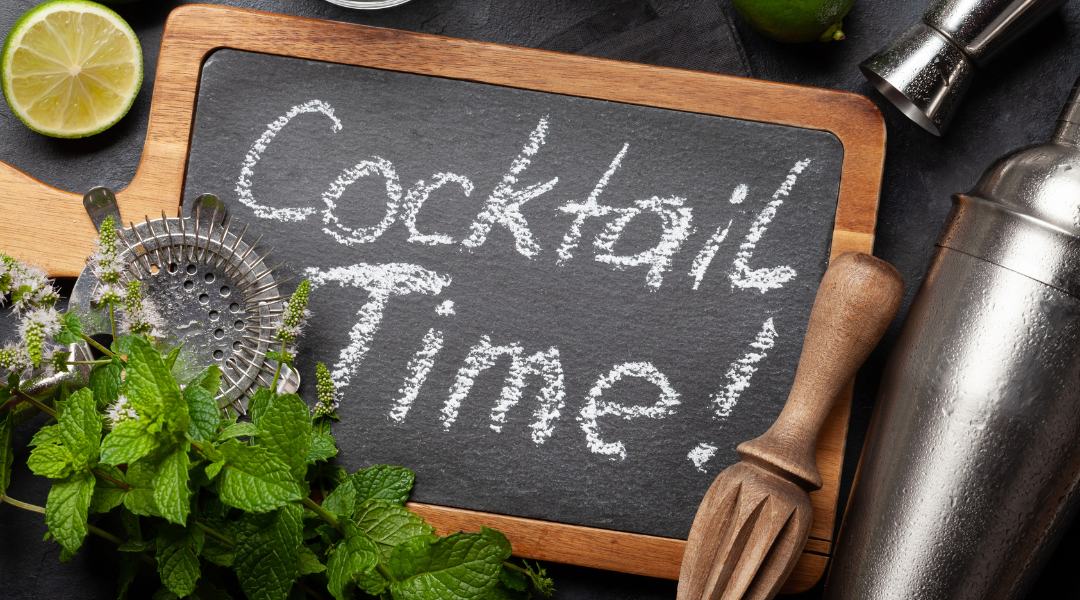
To muddle or not to muddle, that is the question.
When adding herbs to your cocktails, you need to release the oils from the herbs—otherwise, you won’t get the full flavor and aroma we want from the herbs.
One way to release the oils is by muddling. That is, to crush the herbs with a wooden muddling tool.
Before you muddle—and meddle with your lovely fresh herbs—consider this . . .
While muddling is a longstanding technique for making cocktails, it causes your lovely fresh herbs to break apart—creating an unpleasant grittiness in your drink. Harsh muddling, especially, can really mess up the texture of your herbs, and more importantly, your drink.
Consider bruising your herbs instead! Bruising is a gentler way to release the oils from your herbs when making cocktails. You still get the herb’s full flavor and aroma, while keeping the leaves (or flowers) intact!
How do you bruise herbs for cocktails? Simply put the herbs in one hand and slap them gently a few times with your other hand.
Hilary (my blog partner) and I experimented—and we’re strongly in favor of bruising vs. muddling. Give it a try for yourself. If you’ve been on Team Muddle up until now, I’m fairly confident you’ll become a Team Bruise convert.
In addition to the smoother texture—and more elegant visual of the intact leaves—the bruising technique adds a tactile element to your drink-making, which I find enhances the whole experience of using herbs for cocktails.
Using Herbs for a Cocktail Garnish
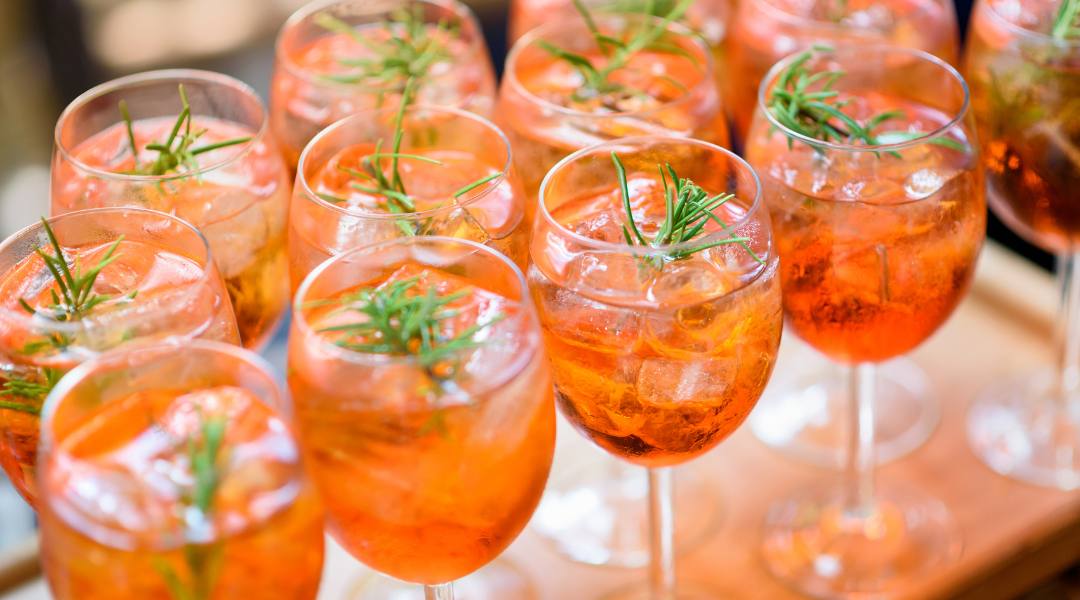
Another way to use herbs for cocktails, of course, is as a garnish. A fresh herb garnish adds to the look of a drink—and it also boosts the aromatic experience with every sip. Just pinch off a sprig or two, wash e’m, and place them in your drink as the finishing touch. Instant transformation!
Infusing Herbs for Cocktails
Infusing herbs in syrups or liquor is another fun and delicious way to add a bit of herby delight to your drinks.
Herb-infused simple syrup is very easy to make. Here are a few basic recipes:
Mint Simple Syrup: Combine equal parts water and granulated sugar in a saucepan. For example, start with 1 cup of water and 1 cup of sugar. Place the saucepan over medium heat and stir until the sugar dissolves completely. Once the mixture comes to a gentle boil, reduce the heat, and add a generous handful of fresh (washed) mint leaves. Let the mint steep in the syrup for about 15 minutes, allowing its fragrant oils to infuse into the liquid. Let the syrup cool completely. Strain out the mint leaves and transfer the syrup into a clean bottle or jar. Use your homemade simple syrup to add a burst of cool, minty sweetness to your drinks.
Lavender Simple Syrup: (This recipe is similar to mint simple syrup, but you don’t want to steep quite as long.) Combine equal parts water and sugar in a saucepan. Add a handful of fresh English lavender flowers (washed, of course), and simmer for 5 minutes. Let it cool, strain, and store in a bottle. Use this syrup to sweeten your cocktails with a delicate floral essence.
You can follow similar recipes to make simple syrups with other herbs of your choice. Or check out Hilary’s Rosemary Simple Syrup recipe.
To make herb-infused liquor, follow these basic steps:
- Wash the herbs of your choice and put them in large glass jar (or other glass container with a screw-on lid).
- Pour in your preferred alcohol.
- Put the lid on and make sure it’s tight.
- Leave it to sit in a cool, dark place for about a week.
- Strain out the herbs and pour the infused liquor back into a clean bottle or jar (you’ll probably need a funnel).
- Be sure to label it so you remember what it is!
Five Fantastic Herbs for Cocktails (And Recipes)
1. Mint for Cocktails
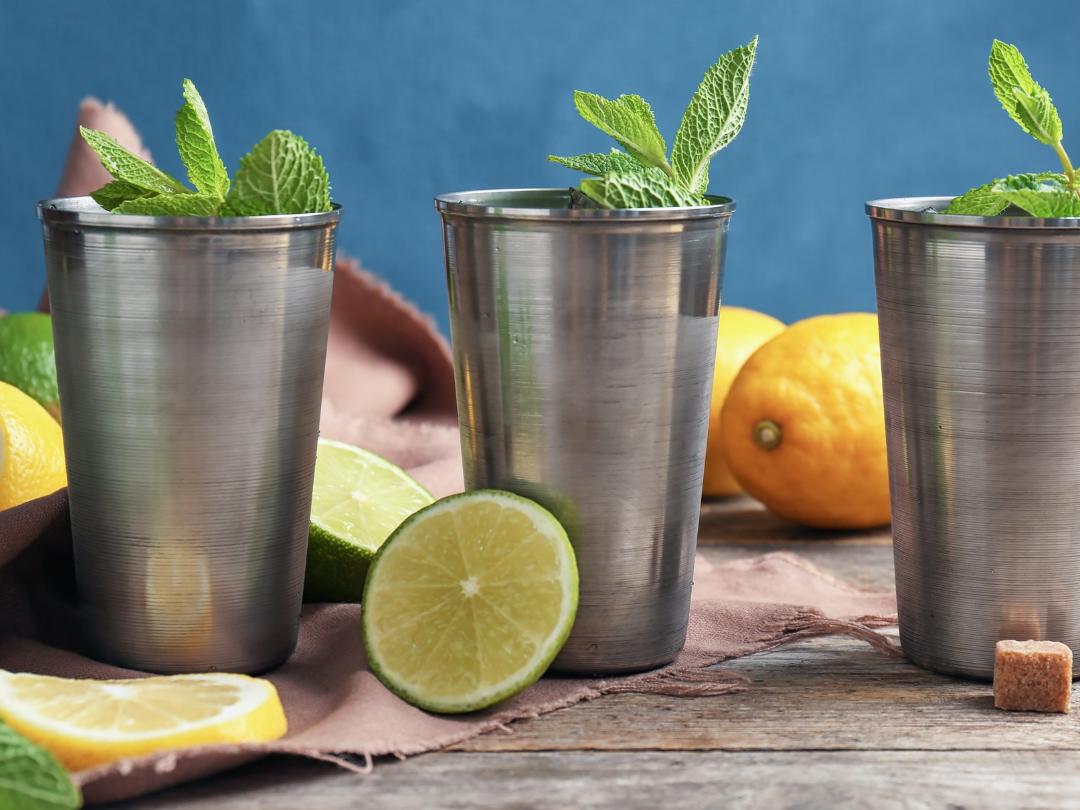
Some herbs have been used in cocktails for centuries and are still popular today. Mint is one of those herbs. The Mojito or Mint Julep, both classic cocktails, are the perfect complement to a hot summer day. The aroma of mint is refreshing and pairs well with the sweetness of sugar and the tanginess of lime.
Mint Julep: A classic southern drink that’s perfect for a festive summer party. The Mint Julep is a delightful combination of bourbon, sugar, and fresh mint. Wash a handful of mint. Place the mint on your open palm and slap it gently with your other hand (as I went on about earlier in this post—to bruise the leaves and extract the oils). Add the mint leaves to a glass and mix in a teaspoon of sugar or simple syrup. Add crushed ice and pour in 3 oz. of your favorite bourbon. Stir gently until the glass becomes frosty. Garnish with a sprig of mint. Take a sip. Mmmmm . . . smooth and minty!
Mojito: A classic Cuban cocktail! In my experience, this festive minty concoction is always a crowd pleaser. Bruise a small handful of washed mint leaves and add them to a glass with a spoonful of sugar or simple syrup—and stir gently. Add a squeeze of lime juice and 3 oz. white rum. Top it off with club soda, give it quick stir, and garnish with a sprig of mint and a lime wedge.
2. Rosemary for Cocktails
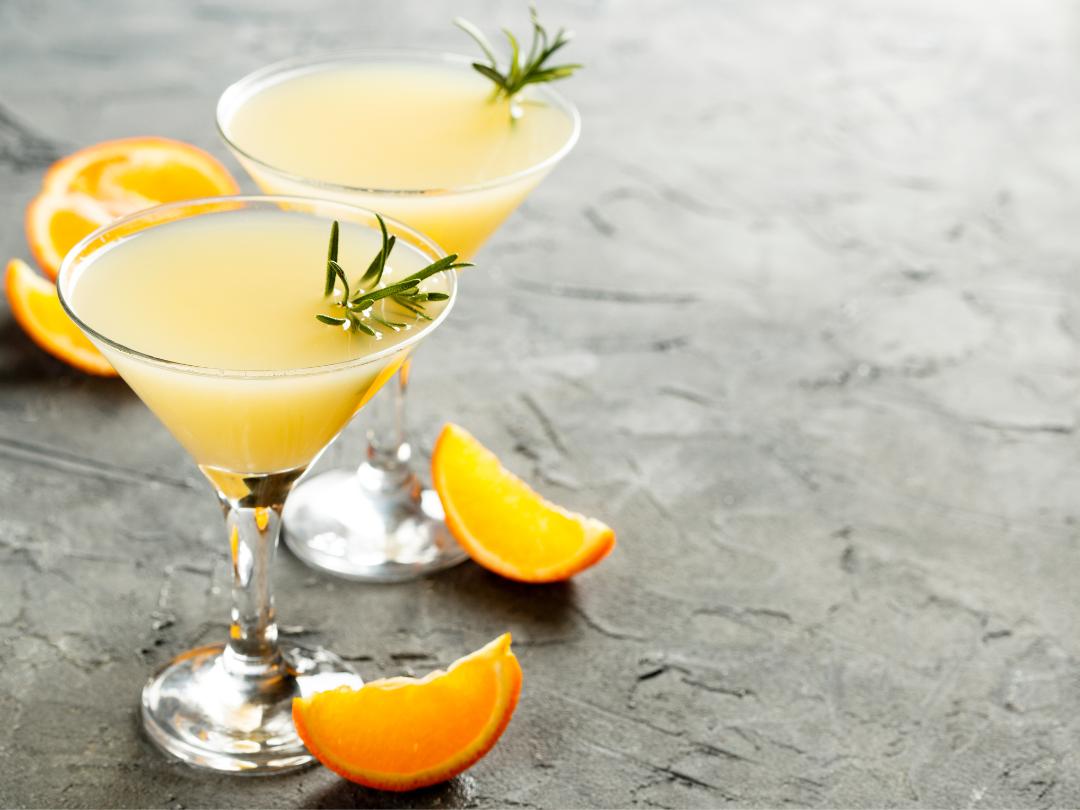
Rosemary is another classic herb for cocktails that brings a sense of nostalgia and tradition. Its woody flavor works well with citrus. Rosemary is known for its medicinal benefits, in addition to its invigorating aroma—so breathe it all in and enjoy!
Rosemary Gin ‘n Juice: For a twist on a Snoop Dogg’s drink of choice, introduce rosemary into the mix. In a shaker, combine gin, freshly squeezed orange juice, a dash of simple syrup, and a sprig of washed rosemary. Shake it up vigorously and strain into a chilled martini glass. Top it off with a splash of club soda and garnish with a rosemary sprig. With every sip, you’ll get a nice whiff of the herb (no, not that herb, Snoop!) and citrusy orange notes mingling harmoniously.
Rosemary Spritzer: Does a wine spritzer count as a cocktail? I’m not sure, so I’m adding vodka to the recipe. You can omit the vodka (and increase the wine portion) if you prefer. In a glass filled with ice, combine 2 oz. of dry white wine, 1 oz. of vodka, a splash of soda water, and a sprig of fresh rosemary (washed and bruised, of course). Squeeze in some fresh lemon juice and gently stir to blend the flavors. Garnish with a lemon slice and another sprig of rosemary. You can experiment with different white wines, but some good options are Sauvignon Blanc and Pinot Grigio.
Love this herb? Grab our free list of 101 uses for rosemary.
3. Thyme for Cocktails
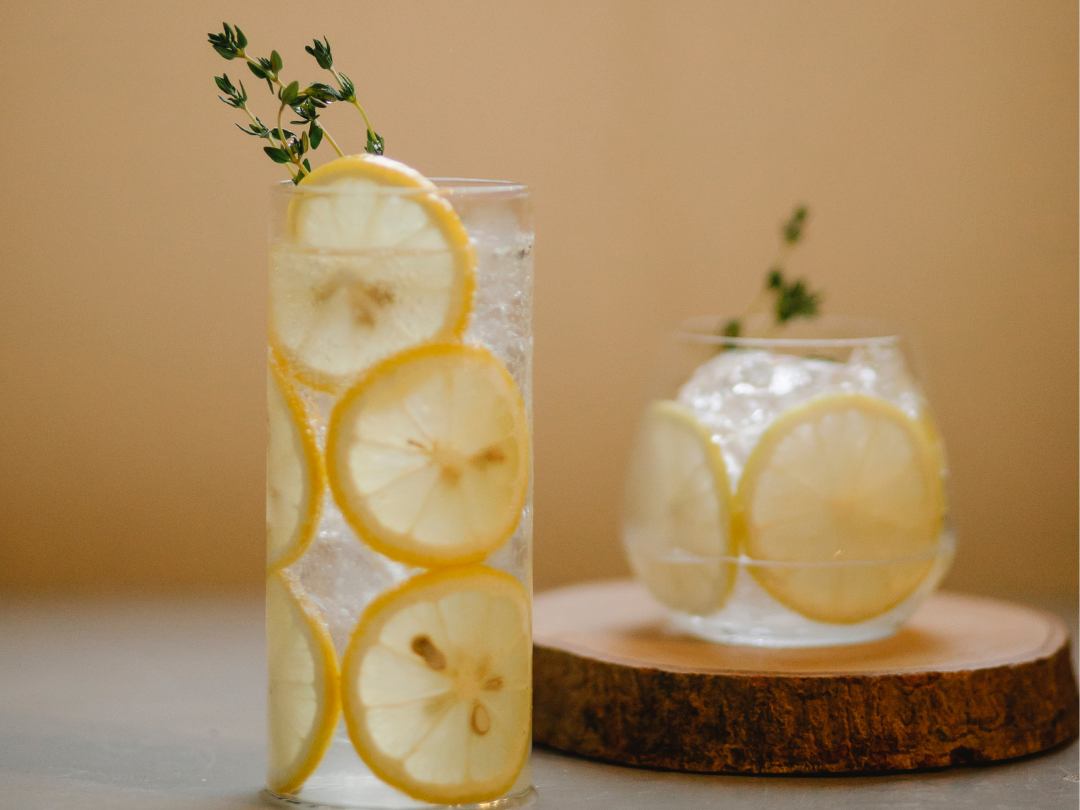
While mint and rosemary are classic herbs for cocktails, using a not-so-common cocktail herb like thyme can add a unique and unexpected twist.
Thyme-Infused Vodka Lemonade: Infuse vodka with thyme by adding a few sprigs of fresh, washed thyme to a bottle of vodka and letting it sit for about a week. To make a thyme-infused vodka lemonade, mix the infused vodka with freshly squeezed lemon juice and simple syrup. Pour it into a glass, add ice and push in a few lemon slices. Garnish with a sprig of thyme. Delight in the harmonious blend of citrus and herbaceous thyme.
Thyme Gin and Tonic: Thyme adds a unique savory note to this classic cocktail. While you could bruise a spring of thyme on you palm, stick it in your usual gin and tonic, and give it a stir—you can also go the infused route. To do so, add a few sprigs of fresh thyme to a bottle of gin and let it sit for about a week. When ready to make your thyme gin and tonic, combine the infused gin with tonic water in a glass filled with ice. Squeeze in some fresh lime juice, give it a gentle stir, and garnish with a fresh thyme sprig.
It’s thyme for cocktails! (Duh, couldn’t resist).
4. Basil for Cocktails
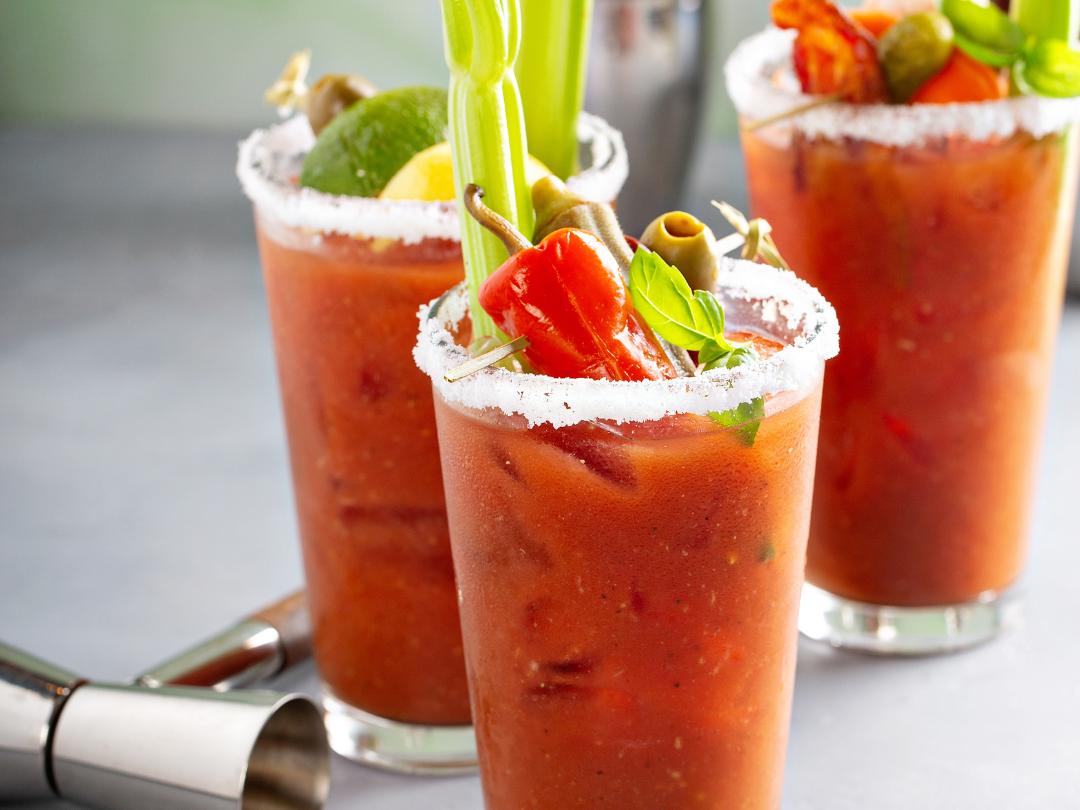
Basil is one of my all-time favorite herbs. It may not be an herb you immediately think of for cocktails, but it can add a wonderfully sweet and spicy element to a drink. (Anyone else craving a caprese salad with fresh basil right now?)
Spicy Basil Bloody Mary: Gently bruise a few fresh, washed basil leaves in your palm and put them in a shaker. Add a dash Tabasco, a splash of Worcestershire sauce, a bit of horseradish, a squeeze of fresh lemon juice, and equal parts vodka, and tomato juice. Sprinkle in some celery salt and black pepper for added flavor. Give it a few good shakes and taste to adjust the seasonings as desired. Fill a tall (salt-rimmed if you like) glass with ice cubes and strain in the mixture. Garnish with a sprig of fresh basil, and pile on other garnishes of your choice (a stalk of celery, green olives, chili pepper). Enjoy the flavor-packed, spicy kick of this drink with a hearty weekend brunch.
Basil Margarita: Put a spin on the traditional margarita by incorporating basil. In a shaker, combine ice, 2 oz. tequila, 1-1/2 oz. freshly squeezed lime juice, and 1-1/2 oz. triple sec. Wash and bruise a handful of basil leaves and add them to the shaker. (If you like your margs a bit sweeter, go ahead and add some agave syrup to taste.) Shake vigorously for about 15 seconds, then strain into a salt-rimmed glass filled with fresh ice. Garnish with a sprig of basil and a lime wheel. The marriage of tangy lime, tequila, and oh-so-fragrant basil is truly delicious.
5. Lavender for Cocktails
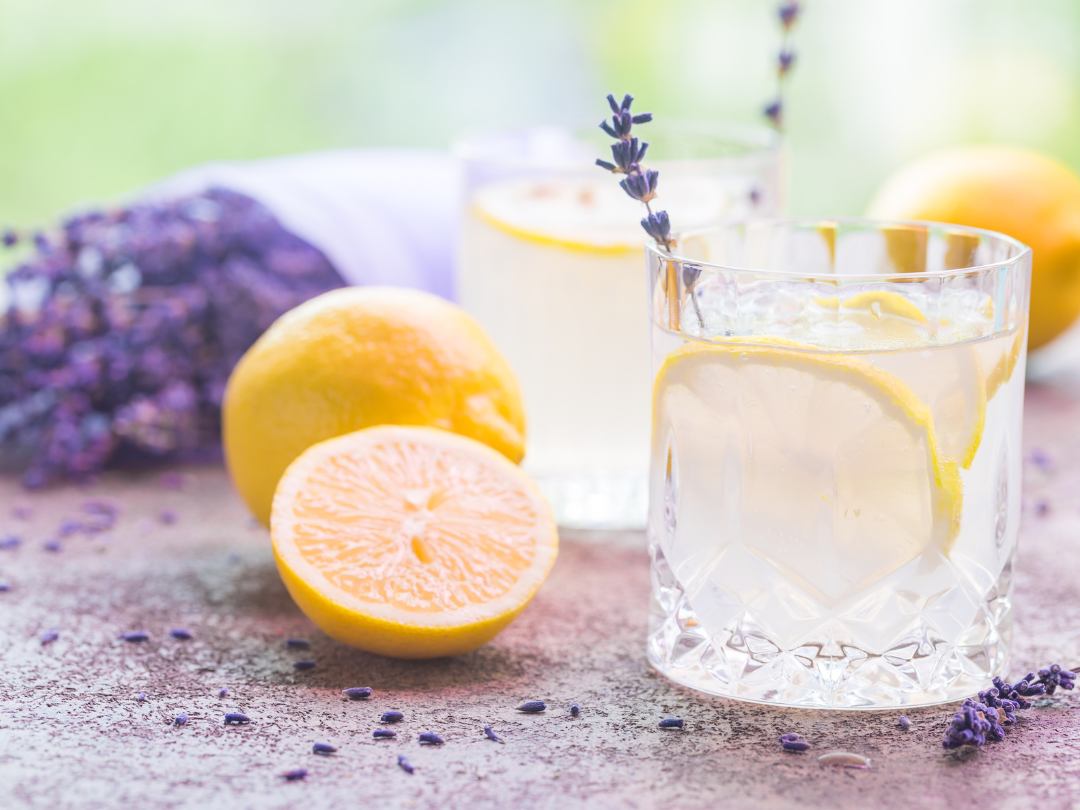
Say what? Lavender in my cocktail? Yesssss. The floral flavors will dance on your taste buds and the lovely aroma will soothe your soul. Plus, it’s quite pretty!
Fresh lavender introduces a subtle, floral scent that carries hints of citrus and mint, with a touch of sweetness. As for flavor, it brings a gentle herbal note, sometimes with a touch of bitterness, that adds complexity to your libations. Do I sound like a lavender sommelier? (I had to look up those flavor and aroma descriptions.)
TIPS: When using lavender in cocktails, only use the flower buds and not the stems, as they can be quite woody and overpowering. And keep in mind that some types of lavender taste better than others. English lavender and Provence lavender are both nice herbs for cocktails.
Lavender Vodka Tonic: In a shaker filled with ice, combine 3 oz. of your favorite vodka, a generous squeeze of fresh lemon juice, and a the flowers from a sprig of fresh lavender. Stir gently, then strain into a glass filled with ice. Add add a few lemon slices, top it off with tonic water, and garnish with sprig of flowering lavender.
Lavender Lemon Martini. In a cocktail shaker, combine 2 oz. vodka, 1 oz. lavender simple syrup (recipe in earlier section), and 1 oz. fresh lemon juice. Add ice to fill the shaker and shake vigorously for about 15 seconds. Strain the mixture into a chilled martini glass and garnish with a twist of lemon peel and a sprig of fresh lavender. Très elegant!
Herbs for Non-Alcoholic Drinks
Sober curious? On the wagon? Mixing up some fun drinks for kids? Or just looking for a refreshing non-boozy beverage? Herbs can also be used in non-alcoholic drinks. Here are few ideas to get you started:
Cucumber and Herb Infused Water: Add sliced cucumber, mint, and basil to a carafe (or jug or pitcher) of water with ice to create a drink that’s both hydrating and full of flavor.
Watermelon and Basil Lemonade: Combine lemon juice, water, and simple syrup to create your preferred balance of sweet and tangy. Add a handful of basil leaves and cubed watermelon, and stir gently to create a sweet and savory refresher.
Lavender Lemonade Spritz: Mix 2 oz. freshly squeezed lemon juice, 1 oz. lavender simple syrup (recipe in earlier section), and 4 oz. of sparkling water in a glass. Add ice, garnish with a sprig of lavender.
REMEMBER: As with the alcoholic drinks, don’t forget to bruise your herbs to enjoy the full flavor and aroma of herbs in your non-alcoholic drinks.
Ready to mix up some herby cocktails or mocktails? Try out some of these recipes and comment below to let us know what you think. Or get creative with your own recipes–and be sure to share those in the comments, too.
We partner with select companies whose products and/or services we love. Some of the links on this page may be affiliate links. If you purchase an item using our affiliate link, we may receive a small commission (at no added cost to you). We appreciate your support.

